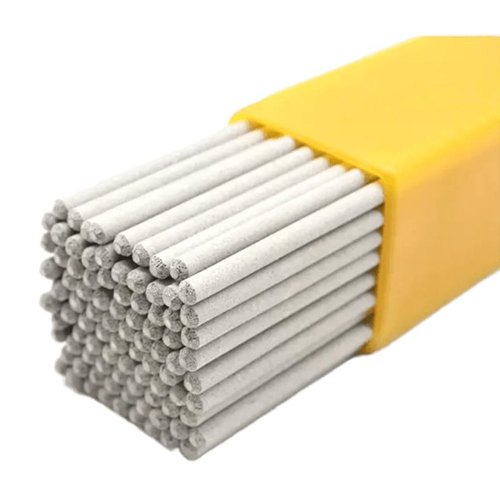CHARACTERISTICS & APPLICATIONS
íshín-316LMS has nominal composition (wt. %) of weld metal 19.5 Cr, 16.5 Ni, 6.5 Mn, 3 Mo, 0.2 N. This is normally a fully austenitic alloy with a maximum ferrite content of 0.5 FN. In critical applications for cryogenic and corrosion-resistant service, the purchaser should specify the maximum ferrite allowable. One of the primary uses of this electrode is for the joining of similar and dissimilar cryogenic steels for applications down to –269°C. Similar steels include stainless steels such as UNS S30453 and S31653. This electrode also exhibits good corrosion resistance in acids and seawater and is particularly suited to the corrosion conditions found in urea synthesis plants. It is also nonmagnetic. The high Mn-content of the alloy helps to stabilize the austenitic microstructure and aids in hot cracking resistance.
These electrodes are designed for flat and horizontal fillet welding. In practice, most of these electrodes give higher deposition rates than their all-positional counterparts owing to their thicker coatings that contain higher levels of metal powders. The thicker coating gives larger fillet welds that are typically flat to concave. It also reduces the effects of core wire overheating, making 450 mm long electrodes possible for the larger electrodes, even with stainless steel core wire. Higher currents are usually required to achieve the necessary penetration compared to the all-positional types. The slag system of these electrodes is like those of the – 16 and -17 designations. The resulting slag may be more fluid and even slower freezing than that from -17 electrodes. The -26 electrodes are recommended for welding only in flat and horizontal fillet positions. Out of position welding may be possible with electrode sizes up to 3.2 mm diameter.
Storage and Drying Conditions: Hydrogen can have adverse effects on welds in some steels under certain conditions. One source of this hydrogen is moisture in the electrode coverings. For this reason, the proper storage, treatment, and handling of electrodes are necessary.
Holding Ovens: 125°C–150°C.
Drying Conditions: 250°C–425°C for 1 hour prior to use.
CHEMICAL COMPOSITION OF UNDILUTED WELD
| C | Cr | Ni | Mo | Nb+Ta | Mn | Si | P | S | N | Cu | Others |
| 0.04 | 18.0-21.0 | 15.0-18.0 | 2.5-3.5 | NS | 5.0-8.0 | 0.90 | 0.04 | 0.03 | 0.10-0.25 | 0.75 | NS |
Single values are maxima, except where specified otherwise.
ALL-WELD-METAL MECHANICAL PROPERTIES
| Tensile Strength, MPa | Yield Strength, At 0.2% Offset, MPa | Elongation % | Lateral Expansion, mm | Charpy V-Notch Impact at NS°C, Joules |
| 550 | NS | 20 | NS | NS |
Single values are minimal.
ELECTRODE SIZE & WELDING CURRENT (AC and DCEP)
| DIAMETER, mm | LENGTH, mm | Amperes |
| 2.50 | 350 | 65-90 |
| 3.15, 3.20 | 350 | 90-120 |
| 4.00 | 350 | 120-150 |
| 5.00 | 350 | 160-200 |
WARNING: Safety and health information is available from many sources, including, but not limited to Safety and Health Fact Sheets listed in A11.3, ANSI Z49.1 Safety in Welding, Cutting, and Allied Processes published by the American Welding Society, 8669 Doral Blvd., Suite 130, Doral, FL 33166., and applicable federal and state regulations. The Safety and Health Fact Sheets are revised, and additional sheets added periodically.

